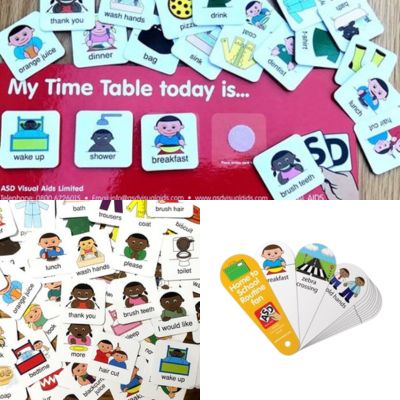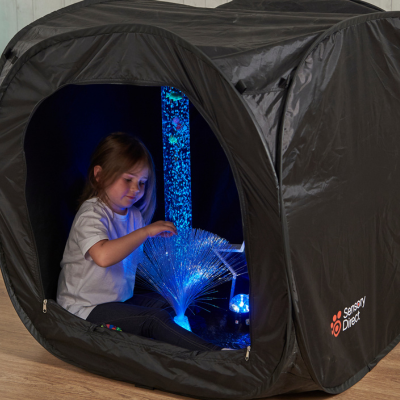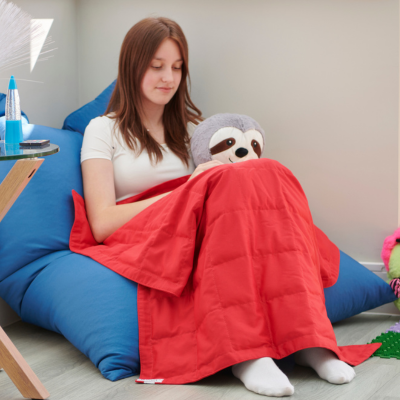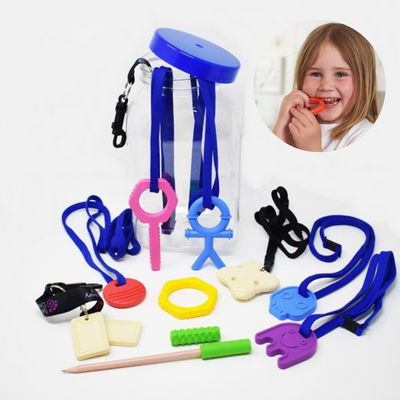Top Tips for Managing After School Meltdowns
Managing after schools meltdowns. It's a topic we discuss a lot with our customers. Your child has had a fantastic day at school, then comes home full of frustration, anxiety and sometimes anger. But why and how do you manage this behaviour?
Put yourself in their shoes. Your child has been in a controlled, structured environment all day. They've focused, participated and listened for several hours. As soon as they are home it's like a release of energy. Home is their safe place to let out all the built up frustration from their day. They are now in their safe space to let it all out and the challenge most parents face is 'how do we manage this?'
As parents of SEN children we have experienced many 'after school meltdowns'. It's important to stress that we shouldn't stop this behaviour, your child needs to express themselves. Instead, we need to learn how to manage this behaviour so our children can express themselves freely and most importantly safely. This article shares some of our top tips for managing this behaviour.
Establish a Predictable Routine
Start by creating a daily schedule with consistent routines. The predictability of a routine provides a sense of comfort and security for children with additional needs. Visual aids such as charts or pictures can be used to help understand and anticipate daily activities. They allow the expression of emotions and can be used to direct and prompt what is going to happen.
Talking your child through the daily routine can help to avoid after school meltdowns, and instead foster a safe space for them to release. Create an after school routine that dedicates time and space for your child to process their day in a controlled way. For example, if being in a quiet, calm space helps your child relax, show this on the timetable. If your child gets very energetic during their meltdown then perhaps a body sock, or some gross motor activities will help them to release in a safe manner.
It's important to create an after school routine that supports your child to release their emotions in a safe way. Having a visual representation of this routine on a timetable reassures them that this time is dedicated for them to process their day. Be consistent and allow for this time each day, and this familiarity can help reduce the severity of the meltdown.
Our Home Symbols Visual Communication Pack is ideal for the use of a parent or carer either at home or in social situations. It contains 45 visual symbols including wake up routine, dressing, eating, social situations and many more.
Provide a Quiet and Calming Environment
This may seem like a very obvious tip, but it's so important. Designate a quiet and comfortable space where you or your child can retreat if feeling overwhelmed. It doesn't need to be a whole room, just a nominated space that's a calming environment. Talk to your child about the space and let them know that it's for them to use if they are feeling overwhelmed. Consider adding sensory-friendly elements such as soft lighting, bubble tubes, comfortable seating, or sensory tools like fidget toys.
If space is limited then our pop up sensory dens are the perfect solution. The pop up constructions allows for quick setting up and putting down, with a handy storage bag for safe keeping.
Top tip; pick resources that you or your child respond well to. The idea of this space is to provide comfort in a safe environment that will help to calm. Use go-to tools and favourite resources that you know will help. Consider different textures and involve them in choosing what will go into the space so it's familiar and relaxing.
Weighted Therapy
Weighted Therapy has long been used as a tool for reducing anxiety and stress. The combined weight and pressure helps those who are 'sensory seeking' to relax, focus and calm. Applying a weighted product can feel like having a big hug. This can be incredibly reassuring to someone who is feeling overwhelmed, frustrated or on the brink of a meltdown.
Weighted products can include weighted lap pads and shoulder wraps, weighted hug vests, weighted animals and weighted cushions.
Weighted Therapy can be used in a variety of ways to help calm your child after school. You could take a weighed lap pad in the car, to help calm on the way back home. The knowledge that this is in the car waiting for them can act as an added comfort. Couple with a pair of ear defenders to reduce uncomfortable noise and have a bag to hand with their favourite fidget toys to focus on.
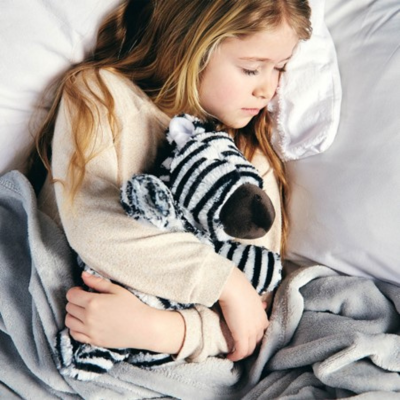
Top tip; If you are new to Weighted Therapy we would suggest starting with a weighted animal or weighted lap pad. The weighted animals are available in a range of cuddly designs and you can choose from various fabrics for the lap pads. If you have an older child or you are looking for something for yourself, why not try one of our weighted cushions.
Good to know; All of our weighted lap pads, shoulder and neck wraps are handmade by us here in the UK. We offer a lifetime guarantee for quality on all of these products, giving you complete peace of mind.
Safe Stimming
After school meltdowns can often lead to increased stimming. If you or your child is prone to biting or chewing objects when anxious, you may want to try a sensory chew. These are safer and more hygienic than clothes, toys, pencils and in some cases fingers and hands.
Our Chewbuddy™ range of sensory chews are perfect for those who bite and chew. The range combines the best in safety and hygiene with textures, different levels of hardness and shapes. Whether its a Sensory Chew for the wrist, pencil or around the neck on a safety lanyard, our range, handmade in the UK, has it all.
Fidgeting is another form of stimming and you may find this increases during periods of anxiety. Fidget toys are the perfect tool for keep fidgety hands busy, helping to refocus and reduce anxiety. Cost effective and available in a range of designs, they are ideal for at home, the car, school or whilst out and about. Be sure to select fidget toys that are appropriate for you or your childs needs. Steer away from squishy or gel filled toys if the user is prone to chewing or biting.
Top tip; Make sure to always have a backup or spare sensory chew. Take it from us, it can be incredibly stressful trying to source a sensory chew last minute if you lose one!
Encourage Sensory Breaks and Exercise
It's important to recognise and address sensory needs by incorporating sensory breaks into the after school routine. Allow time for activities that stimulate or soothe the senses. Activities such as stretching, moving, rolling, blowing bubbles, eating a healthy snack or tactile play all offer sensory input. Therapy balls, scooter boards and resistance bands can be great ways to get the blood pumping, reduce the stress levels and leave your child feeling happier and calmer.
Top tip; Sensory breaks are usually around 10 minutes at a time, but may be longer if you are very anxious.Here are our top 5 easy sensory break ideas to do at home.
- Get moving! Simple, fun and costing nothing. Stretch, dance and move your body to help reduce tension and have fun!
- Play with therapy putty or playfoam. Squeeze, stretch and pull to exercise hands and fingers.
- Sit inside a sensory den and enjoy watching calming sensory lights.
- Jump on a trampoline and bounce the stress away!
- Climb inside a body sock and get whole body sensory feedback
Visit our website for more tips, products and ideas.





